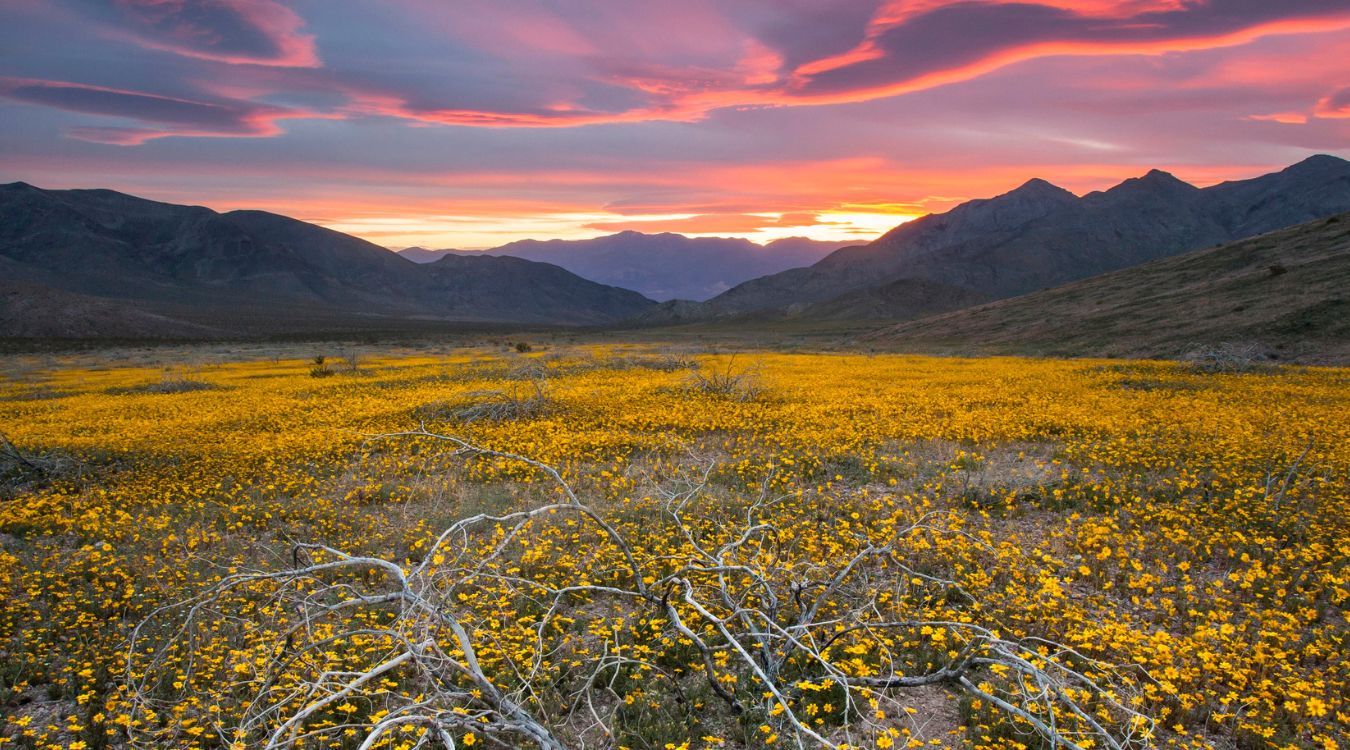Hidden Wonders Of California’s Death Valley Wildflowers

Have you ever wondered how a desert can burst into a sea of color? Death Valley wildflowers are a breathtaking sight that transforms the harsh landscape into a vibrant paradise. Every spring, if conditions are just right, the valley floor becomes a canvas painted with yellows, purples, and pinks. This natural phenomenon, known as a "super bloom," attracts visitors from all over the world. Imagine walking through fields of flowers where just months before, there was only barren sand. The contrast is stunning. Curious about when to visit or what to expect? Let's dive into the magic of Death Valley's wildflower season.
The Magic of Death Valley Wildflowers
Death Valley, known for its scorching temperatures and arid landscapes, transforms into a vibrant wonderland of wildflowers under the right conditions. This rare phenomenon, often called a "super bloom," is a sight to behold. Let's explore some of the best spots to witness this natural spectacle.
Best Time to Visit
Timing is everything when it comes to catching the wildflowers in full bloom. The best time to visit Death Valley for wildflowers is typically from late February to early April. Rainfall during the winter months plays a crucial role in determining the intensity and spread of the blooms.
Must-See Wildflower Spots
- Badwater Basin
Badwater Basin, the lowest point in North America, is a surprising hotspot for wildflowers. Here, you can find fields of Desert Gold, a bright yellow flower that contrasts beautifully with the stark salt flats.
- Artist's Palette
Artist's Palette, known for its colorful hills, also hosts a variety of wildflowers. Look for the Desert Five-Spot, a delicate pink flower with five dark spots, adding a splash of color to the already vibrant landscape.
- Golden Canyon
Golden Canyon offers a stunning backdrop for wildflower viewing. The golden hues of the canyon walls complement the purple blooms of the Desert Sand Verbena, creating a picturesque scene.
- Zabriskie Point
Zabriskie Point, famous for its panoramic views, is another excellent spot for wildflower enthusiasts. Here, you can find the Notch-Leaf Phacelia, a small purple flower that thrives in the rocky terrain.
- Titus Canyon
Titus Canyon, with its dramatic cliffs and winding roads, is a hidden gem for wildflower lovers. The Gravel Ghost, a white flower that seems to float above the ground, is a common sight in this area.
- Mesquite Flat Sand Dunes
Mesquite Flat Sand Dunes, known for their towering sand formations, also host a variety of wildflowers. The Sand Verbena, with its vibrant pink blooms, adds a touch of color to the golden sands.
- Mosaic Canyon
Mosaic Canyon, with its smooth, polished walls, is a unique spot to find wildflowers. The Rock Nettle, a yellow flower that grows in rocky crevices, is a common sight here.
- Dante's View
Dante's View, offering breathtaking views of the valley below, is another prime location for wildflower spotting. The Desert Marigold, a bright yellow flower, can be found dotting the landscape.
- Furnace Creek
Furnace Creek, a popular starting point for many visitors, is also a great place to see wildflowers. Look for the Brown-Eyed Evening Primrose, a white flower with a distinctive brown center.
- Scotty's Castle Road
Scotty's Castle Road, leading to the historic Scotty's Castle, is lined with wildflowers during the bloom. The Desert Star, a small white flower, is a common sight along this scenic route.
Nature's Hidden Gem
California's Death Valley is more than just a desert. During the rare super bloom, it transforms into a vibrant landscape filled with wildflowers. This natural event is a sight to behold, drawing visitors from all over. The desert gold, desert five-spot, and notch-leaf phacelia are just a few of the stunning flowers you can see.
Timing your visit is crucial. Super blooms depend on specific weather conditions, so keep an eye on forecasts. When the conditions are right, the valley bursts into color, offering a unique experience.
Exploring Death Valley during a super bloom is a chance to witness nature's resilience and beauty. It's a reminder that even the harshest environments can surprise us with their hidden wonders. Don't miss out on this incredible spectacle. Plan your trip and see Death Valley in a way few get to experience.

